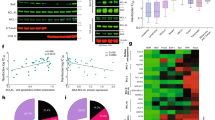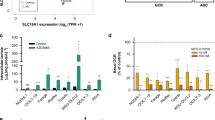Abstract
At least two mechanisms of early cytosolic acidification during apoptotic signaling have been described, one that involves caspase 8 activation downstream of receptor ligation and another dependent on mitochondria-derived hydrogen peroxide during merocil-induced apoptosis. Here, we show that Bcl-2 inhibits both mechanisms of acidification. Moreover, Bcl-2 overexpression resulted in a slightly elevated constitutive level of superoxide anion and pH in CEM leukemia cells. Interestingly, decreasing intracellular superoxide concentration with an inhibitor of the β-nicotinamide adenine dinucleotide phosphate oxidase or by transient transfection with a dominant-negative form of the guanosine triphosphate-binding protein Rac1 resulted in a significant increase in the sensitivity of CEM/Bcl-2 cells to CD95- or merocil-induced apoptosis. This increase in sensitivity was a direct result of a significant increase in caspase 8 activation and caspase 8-dependent acidification in the absence of caspase 9 activity or cytochrome c release. These findings suggest a mechanism of switching from mitochondria-dependent to mitochondria-independent death signaling in the same cell, provided the intracellular milieu is permissive for upstream caspase 8 activation, and could have implications for favorably tailoring tumor cells for drug treatment even when the mitochondrial pathway is compromised by Bcl-2.
Similar content being viewed by others
Log in or create a free account to read this content
Gain free access to this article, as well as selected content from this journal and more on nature.com
or
Abbreviations
- DPI:
-
diphenyleneiodonium
- Cyt c:
-
cytochrome C
- BCECF-AM:
-
2′,7′-bis(2-carboxyethyl)-5,6-carboxyfluorescein
- DCFH-DA:
-
2′,7′-dichlorofluorescein diacetate
- O2−:
-
superoxide
- H2O2:
-
hydrogen peroxide
References
Wyllie AH (1981) Cell death: a new classification separating apoptosis from necrosis. In Cell Death in Biology and Pathology Bowen ID, Lockshin RA (eds) London: Chapman & Hall, pp. 9–34
Kroemer G and Reed JC (2000) Mitochondrial control of cell death. Nat. Med. 6: 513–519
Scaffidi C, Fulda S, Srinivasan A, Friesen C, Li F, Tomaselli KJ, Debatin KM, Krammer PH and Peter ME (1998) Two CD95 (APO-1/Fas) signaling pathways. EMBO J. 17: 1675–1687
Gottlieb RA, Nordberg J, Skowronski E and Babior BM (1996) Apoptosis induced in Jurkat cells by several agents is preceded by intracellular acidification. Proc. Natl. Acad. Sci. USA 93: 654–658
Pervaiz S and Clement MV (2002) A permissive apoptotic environment: function of a decrease in intracellular superoxide anion and cytosolic acidification. Biochem. Biophys. Res. Commun. 290: 1145–1150
Matsuyama S and Reed JC (2000) Mitochondria-dependent apoptosis and cellular pH regulation. Cell Death Differ. 7: 1155–1165
Matsuyama S, Llopis J, Deveraux QL, Tsien RY and Reed JC (2000) Changes in intramitochondrial and cytosolic pH: early events that modulate caspase activation during apoptosis. Nat. Cell Biol. 2: 318–325
Hirpara JL, Clement MV and Pervaiz S (2001) Intracellular acidification triggered by mitochondrial-derived hydrogen peroxide is an effector mechanism for drug-induced apoptosis in tumor cells. J. Biol. Chem. 276: 514–521
Liu D, Martino G, Thangaraju M, Sharma M, Halwani F, Shen SH, Patel YC and Srikant CB (2000) Caspase-8-mediated intracellular acidification precedes mitochondrial dysfunction in somatostatin-induced apoptosis. J. Biol. Chem. 275: 9244–9250
Clement MV, Ponton A and Pervaiz S (1998) Apoptosis induced by hydrogen peroxide is mediated by decreased superoxide anion concentration and reduction of intracellular milieu. FEBS Lett. 440: 13–18
Adachi S, Cross AR, Babior BM and Gottlieb RA (1997) Bcl-2 and the outer mitochondrial membrane in the inactivation of cytochrome c during Fas-mediated apoptosis. J. Biol. Chem. 272: 21878–21882
Meisenholder GW, Martin SJ, Green DR, Nordberg J, Babior BM and Gottlieb RA (1996) Events in apoptosis. Acidification is downstream of protease activation and BCL-2 protection. J. Biol. Chem. 271: 16260–16262
Thangaraju M, Sharma K, Leber B, Andrews DW, Shen SH and Srikant CB (1999) Regulation of acidification and apoptosis by SHP-1 and Bcl-2. J. Biol. Chem. 274: 29549–29557
Pervaiz S, Cao J, Chao OS, Chin YY and Clement MV (2001) Activation of the RacGTPase inhibits apoptosis in human tumor cells. Oncogene 20: 6263–6268
Pervaiz S, Ramalingam JK, Hirpara JL and Clement MV (1999) Superoxide anion inhibits drug-induced tumor cell death. FEBS Lett. 459: 343–348
Clement MV and Stamenkovic I (1996) Superoxide anion is a natural inhibitor of FAS-mediated cell death. EMBO J. 15: 216–225
Thangaraju M, Sharma K, Liu D, Shen SH and Srikant CB (1999) Interdependent regulation of intracellular acidification and SHP-1 in apoptosis. Cancer Res. 59: 1649–1654
Engels IH, Stepczynska A, Stroh C, Lauber K, Berg C, Schwenzer R, Wajant H, Janicke RU, Porter AG, Belka C, Gregor M, Schulze-Osthoff K and Wesselborg W (2001) Caspase-8/FLICE functions as an executioner caspase in anticancer drug-induced apoptosis. Oncogene 19: 4563–4573
Fulda S, Meyer E, Friesen C, Susin SA, Kroemer G and Debatin KM (2001) Cell type specific involvement of death receptor and mitochondrial pathways in drug-induced apoptosis. Oncogene 20: 1063–1075
Korsmeyer SJ, Yin X-M, Oltvai Z, Veis-Novack DJ and Linette GP (1995) Reactive oxygen species and regulation of cell death by the Bcl-2 gene family. Biochem. Biophys. Acta 1271: 63–66
Steinman HM (1995) The Bcl-2 oncoprotein functions as a pro-oxidant. J. Biol. Chem. 270: 3487–3490
Voehringer DW and Meyn RE (2000) Redox aspects of Bcl-2 function. Antioxid. Redox Signal 2: 537–550
Clement MV and Pervaiz S (1999) Reactive oxygen intermediates regulate cellular response to apoptotic stimuli: an hypothesis. Free Radic. Res. 30: 247–252
Armstrong JS and Jones DP (2002) Glutathione depletion enforces the mitochondrial permeability transition and causes cell death in HL60 cells that overexpress Bcl-2. FASEB J. 10: 1263–1265
Babior BM (1999) NADPH oxidase: an update. Blood 93: 1464–1476
Kobayashi T, Tsunawaki S and Seguchi H (2001) Evaluation of the process for superoxide production by NADPH oxidase in human neutrophils: evidence for cytoplasmic origin of superoxide. Redox Rep. 6: 27–36
Irani K and Goldschmidt-Clermont PJ (1998) Ras, superoxide and signal transduction. Biochem. Pharmacol. 55: 1339–1346
Irani K, Xia Y, Zweier JL, Sollott SJ, Der CJ, Fearon ER, Sundaresan M, Finkel T and Goldschmidt-Clermont PJ (1997) Mitogenic signaling mediated by oxidants in Ras-transformed fibroblasts. Science 275: 1649–1652
Sundaresan M, Yu ZX, Ferrans VJ, Sulciner DJ, Gutkind JS, Irani K, Goldschmidt-Clermont PJ and Finkel T (1996) Regulation of reactive-oxygen-species generation in fibroblasts by Rac1. Biochem. J. 318 (Part 2): 379–382
Babior BM (2000) The NADPH oxidase of endothelial cells. IUBMB Life 50: 267–269
Hockenbery D, Oltvai ZN, Yin X-M, Milliman CL and Korsmeyer SJ (1993) Bcl-2 functions in an antioxidant pathway to prevent apoptosis. Cell 75: 241–251
Nomura K, Imai H, Koumura T, Kobayashi T and Nakagawa Y (2000) Mitochondrial phospholipid hydroperoxide glutathione peroxidase inhibits the release of cytochrome c from mitochondria by suppressing the peroxidation of cardiolipin in hypoglycaemia-induced apoptosis. Biochem. J. 351 (Part 1): 183–193
Huang DC, Tschopp J and Strasser A (2000) Bcl-2 does not inhibit cell death induced by the physiological Fas ligand: implications for the existence of type I and type II cells. Cell Death Differ. 7: 754–755
Huang DC, Hahne M, Schroeter M, Frei K, Fontana A, Villunger A, Newton K, Tschopp J and Strasser A (1999) Activation of Fas by FasL induces apoptosis by a mechanism that cannot be blocked by Bcl-2 or Bcl-x(L). Proc. Natl. Acad. Sci. USA 96: 14871–14876
Pervaiz S, Seyed MA, Hirpara JL, Clement MV and Loh KW (1999) Purified photoproducts of merocyanine 540 trigger cytochrome C release and caspase 8-dependent apoptosis in human leukemia and melanoma cells. Blood 93: 4096–4108
Musgrove EA and Hedley DW (1990) Measurement of intracellular pH. Methods Cell Biol. 33: 59–69
Gyllenhammar H (1987) Lucigenin chemiluminescence in the assessment of neutrophil superoxide production. J. Immunol. Methods 97: 209–220
Liochev SI and Fridovich I (1997) Lucigenin luminescence as a measure of intracellular superoxide dismutase activity in Escherichia coli. Proc. Natl. Acad. Sci. USA 94: 2891–2896
Li Y, Kuppusamy P, Roubaud V, Zweier JL and Trush MA (1998) Validation of lucigenin (bis-N-methylacridinium) as a chemilumigenic probe for detecting superoxide anion radical production by enzymatic and cellular systems. J. Biol. Chem. 273: 2015–2023
Acknowledgements
We thank Dr Roberta Gottlieb, Scripps, La Jolla, CA, USA for the generous gift of the CEM/Neo and CEM/Bcl-2 cells, and Dr Stanley Korsmeyer, Boston, MA, USA for the generously providing the pcDNA3-Bcl-2 plasmid. We also wish to acknowledge Kartini Iskander and Sun Yu for technical assistance. This work was supported by Grants R-185-000-019-213 and R-185-000-032-213 to SP, and R-364-000-013-213 to M-VC from the NMRC, Singapore and a Grant R-185-000-048-305 to SP and M-VC form the BMRC, Singapore.
Author information
Authors and Affiliations
Corresponding author
Additional information
Edited by Dr Green
Rights and permissions
About this article
Cite this article
Clément, MV., Hirpara, J. & Pervaiz, S. Decrease in intracellular superoxide sensitizes Bcl-2-overexpressing tumor cells to receptor and drug-induced apoptosis independent of the mitochondria. Cell Death Differ 10, 1273–1285 (2003). https://doi.org/10.1038/sj.cdd.4401302
Received:
Revised:
Accepted:
Published:
Issue date:
DOI: https://doi.org/10.1038/sj.cdd.4401302
Keywords
This article is cited by
-
Energetic metabolic reprogramming in Jurkat DFF40-deficient cancer cells
Molecular and Cellular Biochemistry (2022)
-
Oncogenic pathways and the electron transport chain: a dangeROS liaison
British Journal of Cancer (2020)
-
CRIF1 overexpression facilitates tumor growth and metastasis through inducing ROS/NFκB pathway in hepatocellular carcinoma
Cell Death & Disease (2020)
-
New Self-assembled Supramolecular Bowls as Potent Anticancer Agents for Human Hepatocellular Carcinoma
Scientific Reports (2019)
-
Smad5 acts as an intracellular pH messenger and maintains bioenergetic homeostasis
Cell Research (2017)



